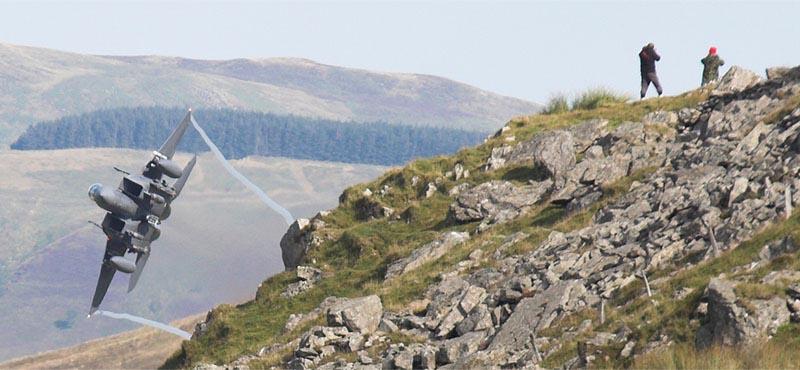
Alyson King, the horse breeder from Carsphairn, in South West Scotland, who is challenging the MOD over low flying in and around her property has gained a positive judgement in
Alyson King, the horse breeder from Carsphairn, in South West Scotland, who is challenging the MOD over low flying in and around her property has gained a positive judgement in her ongoing legal action.
Ms King had claimed that low flying jets have breached the basic 100\' low fly prohibitions which are in place in the area, making life at her farm intolerable and causing distress to livestock.
The area of SW Scotland involved is part of an RAF Tactical Training Area (TTA) over which the RAF are allowed to operate at levels not tolerated elsewhere. To put this in context military air operations over the Isle of Man are prohibited below 2000\'.
Addressing the specific low flying complaint the Court of Sessions Judge, Lord Woolman said:
\"Altitude Guidelines
[9] In Tactical Training Areas, the Ministry of Defence guidelines require aircraft to fly at a minimum separation distance (\'MSD\') of 100 feet. The MSD is \"the distance between the aircraft and the ground or buildings/trees\" (Condescendence 4). The pursuer offers to prove that this guideline was broken. The precise averment is as follows:
\"In flying at an altitude which is just above the treeline around the subjects, and therefore below the MSD, the aircraft passing over the subjects are operating in breach of these guidelines\". Mr Webster made three criticisms of this averment. First, it contradicts the pursuer\'s averment that the trees are approximately 100 feet high. Secondly, it does not distinguish aircraft passing above the tree line around the subjects, from those passing over the subjects themselves. Thirdly, the pursuer fails to identify the incidents when the guidelines were breached.
[10] In reply, Miss King said that the trees are about 100 feet from the house. Jets fly at about 250 feet to 500 feet over Loch Doon. As they approach her property at Drumjohn itself, they sometimes descend to such low levels that they manoeuvre between the trees and there is a sonic boom. It is at that level that they cause the horses to bolt. Above 250 feet, the horses are not troubled at all. She maintains a calendar in which she only records the \'problematic\' incidents, where the jets have flown under the 100 feet barrier.
[11] In my view the defender\'s challenge is well founded. I can only proceed on the basis of the pleadings (which were amended by the pursuer at the outset of the debate). For the reasons given Mr Webster, Condescendence 4 is irrelevant and I shall exclude it from probation.\"
The full Court of Sessions judgement can be found at:
http://www.scotcourts.gov.uk/opinions/2008CSOH166.htmlAlyson King\'s tenacity in pursuing the MOD is an example to others in Scotland, Wales and N. England who suffer the scourge of unrestricted RAF low flying exercises on virtually a daily basis.
Related articles on Celtic News at:
http://groups.yahoo.com/group/celtic_league/message/2724 http://groups.yahoo.com/group/celtic_league/message/2657 http://groups.yahoo.com/group/celtic_league/message/1581J B Moffatt Director of Information Celtic League
06/12/08

Commentaires (0)
Aucun commentaire pour le moment. Soyez le premier à réagir !